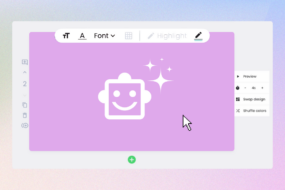
Chapter 2: How to Keep Your Viewers Engaged
Of all the most memorable pieces of content you’ve watched. What do they have in common? They tell a good story. As we migrate rapidly towards a video-driven world, there are a few key components to keep in mind to perfect the art of video storytelling.
In our last post, we spoke about creating a story structure, one that’s familiar to your audience.
It seems obvious to have a beginning, middle, and end for any story, but it’s not something that most people think about when creating a short video for social media.
If you keep with a strong storytelling format that viewers recognize, they can then focus on your message, and not try to piece together what’s going on in the video.
While having a solid structure is the first step to great storytelling, we still have many more aspects to consider. It’s essential to keep in mind that video is a complex mode of communication that involves visualization, pacing, and sound design. Good writing might be enough to keep a reader engaged with a blog post, but some factors help keep viewers’ attention as they strike an emotional chord and evoke feelings in a viewer. The best stories draw an emotional attachment and those are the memorable ones.
When used properly, these three main components can help increase engagement in a video:
1 – The Style
The first component you’ll want to consider is the style, look and feel of your video.
Round shapes are friendly and welcoming, while sharp lines are serious and professional when it comes to design. Using warmer colors like yellow and orange can be welcoming, while cooler colors like blue and green convey respect and stability. It is crucial to ensure that your style matches your message. The video consists of many moving pieces, and your job is to make sure they all mix well, not unlike ingredients in a dish.
2 – The Pacing
The difference between graphic design and video design is that graphics consist of only a single frame, whereas the video is a sequence of frames over time. The pacing of a video can heavily influence how a viewer feels when watching your video.
The pace is determined by a few factors, which include:
- The speed at which elements move around
- The time each scene stays on screen
- The velocity of all your transitions and animations
Once again, synergy is the key. If your message is high energy and upbeat, then pick up the pace to match the story. When working with more somber content, slow down the speed to make it feel more natural.
3 – The Sound
The final ingredient of engagement is sound design. Music can make or break a cinematic experience, and even a one-minute internet video is no different.
Think of the most memorable moments in Star Wars or Lord of the Rings and recall how music can help heighten the narrative. Like pacing, you want to make sure that the soundtrack you select matches the mood and cadence of your video. Pay attention to the speed of the beats and try to align the audio high notes with critical moments in your narrative.
Engagement for our content is why we build our content to begin with.
We want our audiences to connect with our message, to understand and acknowledge our value proposition, and to engage with us, and having these key ingredients in your video will help maintain the attention of your viewers.
Something to try: Dig up some content and pay attention to how the video makes you feel through its style, pacing, and sound. These three ingredients help evoke emotions, which connect your audiences to your story. If you can break through their emotional barrier, you’re in a good spot to be remembered.
Share your thoughts with us! We’d love to hear from you.
Up next, Part 3: Communication and Design










